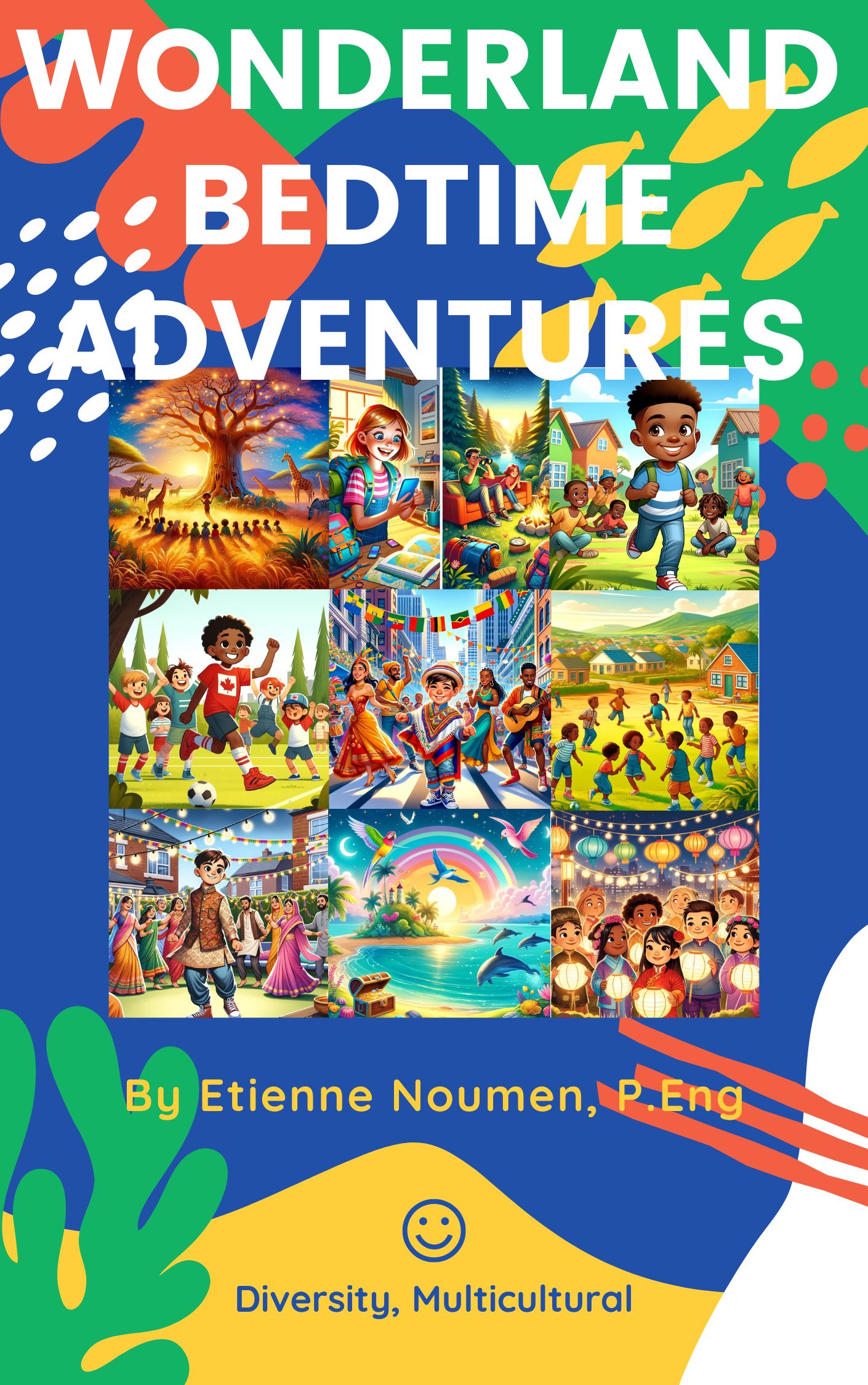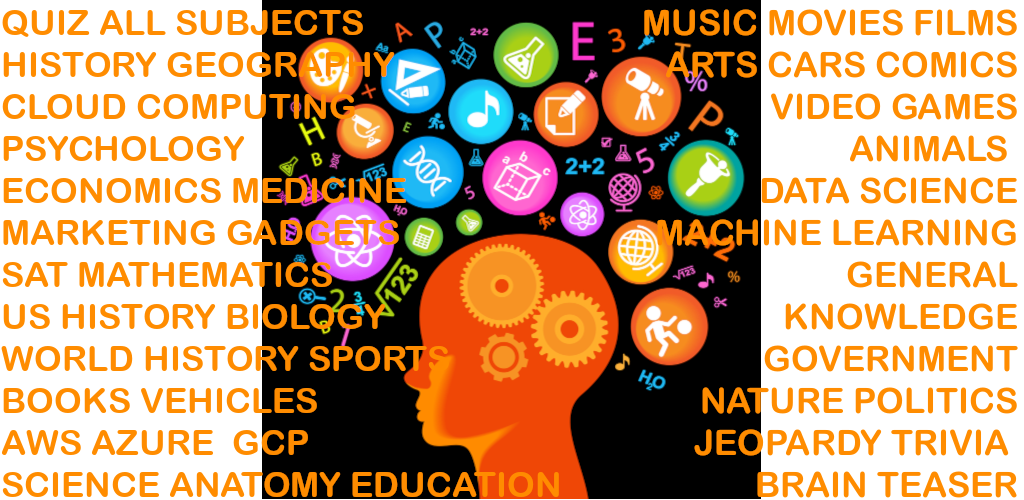Different ways you can add ChatGPT to your website
There are a few different ways you can add ChatGPT to your website, depending on your specific requirements and the tools and frameworks you are using. Here are a few options:
- Use an API: OpenAI has an API that you can use to access ChatGPT. To use the API, you will need to sign up for an API key and then use it to make API calls from your website. You’ll need to write some code to send and receive the API calls, but you can find many examples and libraries in different languages that can help.
- Use a pre-built library or SDK: Some developers have created libraries or software development kits (SDKs) that make it easier to use ChatGPT in your website. For example, Hugging Face provides a JavaScript library that you can use to integrate ChatGPT with your website.
- Embed a pre-built chatbot: There are a few pre-built chatbots available that are built using ChatGPT and that you can embed in your website. For example, Botfront.io allows you to create a chatbot using the GPT-3 language model.

Intro
Requirements
Please note, to use ChatGPT or GPT-3 model, the OpenAI’s API requires a commercial or research agreement to be in place. As well some of the services may require paid subscription, so it’s recommended to check the pricing and terms of use in advance.
It’s also important to note that building a chatbot with GPT-3 or other language models can require some level of skill, mainly related to data science and natural language processing. If you have little or no experience with it, it may be better to seek professional help.
Integration
ChatGPT makes it easy to integrate artificial intelligence (AI) into your web site with just a few clicks. It employs machine learning technology to allow users to easily embed a natural language processing (NLP) chatbot into their website. ChatGPT learns from conversations, providing customers with an engaging and useful experience when visiting your site. ChatGPT will make your website stand out and provide visitors with an enjoyable experience that they won’t soon forget.
What is Google answer to ChatGPT?
What is Google answer to ChatGPT? – IT – Engineering – Cloud – Finance
How can I add ChatGPT to my web site?: Here are 10 use cases of ChatGPT based Apps
1. Connect your ChatGPT with your Whatsapp.
Link: http://bit.ly/3ZfmyzC
2. ChatGPT Writer : It use ChatGPT to generate emails or replies based on your prompt!
Link: http://bit.ly/3vGB3if
3. WebChatGPT: WebChatGPT ( http://bit.ly/3CsA210) gives you relevant results from the web!
4. YouTube Summary with ChatGPT: It generate text summaries of any YouTube video!
Link: http://bit.ly/3QhismB
5. TweetGPT: It uses ChatGPT to write your tweets, reply, comment, etc.
Link: http://bit.ly/3k0vOY4
6. Search GPT: It display the ChatGPT response alongside Google Search results
Link: http://bit.ly/3X8GySx
7. ChatGPT or all search engines: You can now view ChatGPT responses on Google and Bing!
Link: http://bit.ly/3QlH2Tl
Advertise with us - Post Your Good Content Here
We are ranked in the Top 20 on Google
AI Dashboard is available on the Web, Apple, Google, and Microsoft, PRO version
8. Save all your Prompts?: The `ChatGPT History` extension has you covered!
Link: http://bit.ly/3ijtDP8
9. Remake a video: Just pick a video you liked and visit https://lnkd.in/e_GD2reT to get its transcript. Once done, bring that back to Chat GPT and tell it to summarize the transcript. Read the summary and make a video on that yourself.
10. Search what people are Prompting with FlowGPT
Link: https://flowgpt.com
#searchengines #people #building #google #comment #video #writer
Create code to call to the OpenAI API using a natural language instruction.
With Python
import os
import openai
openai.api_key = os.getenv(“OPENAI_API_KEY”)
response = openai.Completion.create(
model=”code-davinci-002″,
prompt=”\”\”\”\nUtil exposes the following:\nutil.openai() -> authenticates & returns the openai module, which has the following functions:\nopenai.Completion.create(\n prompt=\”<my prompt>\”, # The prompt to start completing from\n max_tokens=123, # The max number of tokens to generate\n temperature=1.0 # A measure of randomness\n echo=True, # Whether to return the prompt in addition to the generated completion\n)\n\”\”\”\nimport util\n\”\”\”\nCreate an OpenAI completion starting from the prompt \”Once upon an AI\”, no more than 5 tokens. Does not include the prompt.\n\”\”\”\n”,
temperature=0,
max_tokens=64,
top_p=1.0,
frequency_penalty=0.0,
presence_penalty=0.0,
stop=[“\”\”\””]
)
With NodeJS
const { Configuration, OpenAIApi } = require(“openai”);
const configuration = new Configuration({
apiKey: process.env.OPENAI_API_KEY,
});
const openai = new OpenAIApi(configuration);
const response = await openai.createCompletion({
model: “code-davinci-002”,
prompt: “\”\”\”\nUtil exposes the following:\nutil.openai() -> authenticates & returns the openai module, which has the following functions:\nopenai.Completion.create(\n prompt=\”<my prompt>\”, # The prompt to start completing from\n max_tokens=123, # The max number of tokens to generate\n temperature=1.0 # A measure of randomness\n echo=True, # Whether to return the prompt in addition to the generated completion\n)\n\”\”\”\nimport util\n\”\”\”\nCreate an OpenAI completion starting from the prompt \”Once upon an AI\”, no more than 5 tokens. Does not include the prompt.\n\”\”\”\n”,
temperature: 0,
max_tokens: 64,
top_p: 1.0,
frequency_penalty: 0.0,
presence_penalty: 0.0,
stop: [“\”\”\””],
});
With curl:
curl https://api.openai.com/v1/completions \
-H “Content-Type: application/json” \
-H “Authorization: Bearer $OPENAI_API_KEY” \
-d ‘{
“model”: “code-davinci-002”,
“prompt”: “\”\”\”\nUtil exposes the following:\nutil.openai() -> authenticates & returns the openai module, which has the following functions:\nopenai.Completion.create(\n prompt=\”<my prompt>\”, # The prompt to start completing from\n max_tokens=123, # The max number of tokens to generate\n temperature=1.0 # A measure of randomness\n echo=True, # Whether to return the prompt in addition to the generated completion\n)\n\”\”\”\nimport util\n\”\”\”\nCreate an OpenAI completion starting from the prompt \”Once upon an AI\”, no more than 5 tokens. Does not include the prompt.\n\”\”\”\n”,
“temperature”: 0,
“max_tokens”: 64,
“top_p”: 1.0,
“frequency_penalty”: 0.0,
“presence_penalty”: 0.0,
“stop”: [“\”\”\””]
}’
With Json:
{
“model”: “code-davinci-002”,
“prompt”: “\”\”\”\nUtil exposes the following:\nutil.openai() -> authenticates & returns the openai module, which has the following functions:\nopenai.Completion.create(\n prompt=\”<my prompt>\”, # The prompt to start completing from\n max_tokens=123, # The max number of tokens to generate\n temperature=1.0 # A measure of randomness\n echo=True, # Whether to return the prompt in addition to the generated completion\n)\n\”\”\”\nimport util\n\”\”\”\nCreate an OpenAI completion starting from the prompt \”Once upon an AI\”, no more than 5 tokens. Does not include the prompt.\n\”\”\”\n”,
“temperature”: 0,
“max_tokens”: 64,
“top_p”: 1.0,
“frequency_penalty”: 0.0,
“presence_penalty”: 0.0,
“stop”: [“\”\”\””]
}
https://www.codeproject.com/Articles/5350454/Chat-GPT-in-JavaScript
Is ChatGPT API free?
What do you think about ChatGPT vs Google?
When Google took off, its key characteristic was that it was very very fast compared to its competition. The quality of the results was also impressive, and, as could be expected, it was very reliable and highly available.
That in itself didn’t make it a better product than Yahoo, which for years dominated the search engine market and which was the de facto home page to the internet, even after Google became a household name. However, this was enough to start the narrative that there was something special about Google that others just couldn’t do quite as well.
ChatGPT is not fast, is often wrong, and as a service is very unreliable. It’s down approximately 50% of the times I’m trying to use it. The technology behind it is not rocket science, that said they have a few things going for them. First, they trained a very large language model (LLM). The cost of this operation in terms of machine is massive. Google search can crawl the web and update their index all the time but the resources needed to train a LLM as big as GPT-3 are phenomenal. Second, they have a product. Microsoft, Meta, Google all could have released something similar and sooner, but didn’t. As a result, OpenAI just like Google ~23 years before it has a narrative going for them.
People’s perception of Google search
People’s perception of Google search is that it’s a service that will return 10 blue links to a query which is a list of keywords, that’s a bit unfair because for years this is neither what search results or search queries are, but then again Google has not been able to correct that impression. On the other hand, journalists know that there is a demand for stories that present ChatGPT as an all-powerful oracle that can do many things and whose output cannot be distinguished from actual people and these stories have kept coming – again, just like stories about Google in the early 2000s then about Facebook in the mid aughts.
ChatGPT is still not able to do what Google does.
The most common queries are about the weather, opening hours of businesses, shopping and lottery results. Those things however trite are completely out of bound for ChatGPT which doesn’t have a live connection with the real world. But then there are many things that a LLM-backed chatbot can do (or even better, that specific products supported by LLMs can do) which Google or other big tech companies just don’t offer.
ChatGPT is just one of many services that are threatening the role of Google not just as a search engine but as a central platform. It’s also very preliminary, after GPT3 will come GPT4, after ChatGPT will come waves of products with GPT APIs. So the landscape is going to change significantly over the next couple of years.
GPT-1, GPT-2 and GPT-3 can handle text inputs with sizes varying from 117M to 175B parameters.
GPT-4 is multi-modal i.e., it can handle both image and text inputs. The size of GPT-4 model is not revealed by OpenAI.
Kalyan Kalyanks
A step-by-step guide to building a chatbot based on your own documents with GPT
Chatting with ChatGPT is fun and informative — I’ve been chit-chatting with it for past time and exploring some new ideas to learn. But these are more casual use cases and the novelty can quickly wean off, especially when you realize that it can generate hallucinations.
GPT-4 is a large multimodal model (accepting image and text inputs, emitting text outputs) that, while less capable than humans in many real-world scenarios, exhibits human-level performance on various professional and academic benchmarks.
GPT-4’s improvements are evident in the system’s performance on a number of tests and benchmarks, including the Uniform Bar Exam, LSAT, SAT Math, and SAT Evidence-Based Reading & Writing exams. In the exams mentioned, GPT-4 scored in the 88th percentile and above, and a full list of exams and the system’s scores can be seen GPT-4
Image is a multimodal chatbot like ChatGPT4.
Please follow Fakhar Abbas for more content like this
#artificialintelligence #chatgpt4 #chatgpt #innovation

Advanced Guide to Interacting with ChatGPT
Active Hydrating Toner, Anti-Aging Replenishing Advanced Face Moisturizer, with Vitamins A, C, E & Natural Botanicals to Promote Skin Balance & Collagen Production, 6.7 Fl Oz


Age Defying 0.3% Retinol Serum, Anti-Aging Dark Spot Remover for Face, Fine Lines & Wrinkle Pore Minimizer, with Vitamin E & Natural Botanicals


Firming Moisturizer, Advanced Hydrating Facial Replenishing Cream, with Hyaluronic Acid, Resveratrol & Natural Botanicals to Restore Skin's Strength, Radiance, and Resilience, 1.75 Oz

Skin Stem Cell Serum


Smartphone 101 - Pick a smartphone for me - android or iOS - Apple iPhone or Samsung Galaxy or Huawei or Xaomi or Google Pixel
Can AI Really Predict Lottery Results? We Asked an Expert.

Djamgatech

Read Photos and PDFs Aloud for me iOS
Read Photos and PDFs Aloud for me android
Read Photos and PDFs Aloud For me Windows 10/11
Read Photos and PDFs Aloud For Amazon
Get 20% off Google Workspace (Google Meet) Business Plan (AMERICAS): M9HNXHX3WC9H7YE (Email us for more)
Get 20% off Google Google Workspace (Google Meet) Standard Plan with the following codes: 96DRHDRA9J7GTN6(Email us for more)
FREE 10000+ Quiz Trivia and and Brain Teasers for All Topics including Cloud Computing, General Knowledge, History, Television, Music, Art, Science, Movies, Films, US History, Soccer Football, World Cup, Data Science, Machine Learning, Geography, etc....

List of Freely available programming books - What is the single most influential book every Programmers should read
- Bjarne Stroustrup - The C++ Programming Language
- Brian W. Kernighan, Rob Pike - The Practice of Programming
- Donald Knuth - The Art of Computer Programming
- Ellen Ullman - Close to the Machine
- Ellis Horowitz - Fundamentals of Computer Algorithms
- Eric Raymond - The Art of Unix Programming
- Gerald M. Weinberg - The Psychology of Computer Programming
- James Gosling - The Java Programming Language
- Joel Spolsky - The Best Software Writing I
- Keith Curtis - After the Software Wars
- Richard M. Stallman - Free Software, Free Society
- Richard P. Gabriel - Patterns of Software
- Richard P. Gabriel - Innovation Happens Elsewhere
- Code Complete (2nd edition) by Steve McConnell
- The Pragmatic Programmer
- Structure and Interpretation of Computer Programs
- The C Programming Language by Kernighan and Ritchie
- Introduction to Algorithms by Cormen, Leiserson, Rivest & Stein
- Design Patterns by the Gang of Four
- Refactoring: Improving the Design of Existing Code
- The Mythical Man Month
- The Art of Computer Programming by Donald Knuth
- Compilers: Principles, Techniques and Tools by Alfred V. Aho, Ravi Sethi and Jeffrey D. Ullman
- Gödel, Escher, Bach by Douglas Hofstadter
- Clean Code: A Handbook of Agile Software Craftsmanship by Robert C. Martin
- Effective C++
- More Effective C++
- CODE by Charles Petzold
- Programming Pearls by Jon Bentley
- Working Effectively with Legacy Code by Michael C. Feathers
- Peopleware by Demarco and Lister
- Coders at Work by Peter Seibel
- Surely You're Joking, Mr. Feynman!
- Effective Java 2nd edition
- Patterns of Enterprise Application Architecture by Martin Fowler
- The Little Schemer
- The Seasoned Schemer
- Why's (Poignant) Guide to Ruby
- The Inmates Are Running The Asylum: Why High Tech Products Drive Us Crazy and How to Restore the Sanity
- The Art of Unix Programming
- Test-Driven Development: By Example by Kent Beck
- Practices of an Agile Developer
- Don't Make Me Think
- Agile Software Development, Principles, Patterns, and Practices by Robert C. Martin
- Domain Driven Designs by Eric Evans
- The Design of Everyday Things by Donald Norman
- Modern C++ Design by Andrei Alexandrescu
- Best Software Writing I by Joel Spolsky
- The Practice of Programming by Kernighan and Pike
- Pragmatic Thinking and Learning: Refactor Your Wetware by Andy Hunt
- Software Estimation: Demystifying the Black Art by Steve McConnel
- The Passionate Programmer (My Job Went To India) by Chad Fowler
- Hackers: Heroes of the Computer Revolution
- Algorithms + Data Structures = Programs
- Writing Solid Code
- JavaScript - The Good Parts
- Getting Real by 37 Signals
- Foundations of Programming by Karl Seguin
- Computer Graphics: Principles and Practice in C (2nd Edition)
- Thinking in Java by Bruce Eckel
- The Elements of Computing Systems
- Refactoring to Patterns by Joshua Kerievsky
- Modern Operating Systems by Andrew S. Tanenbaum
- The Annotated Turing
- Things That Make Us Smart by Donald Norman
- The Timeless Way of Building by Christopher Alexander
- The Deadline: A Novel About Project Management by Tom DeMarco
- The C++ Programming Language (3rd edition) by Stroustrup
- Patterns of Enterprise Application Architecture
- Computer Systems - A Programmer's Perspective
- Agile Principles, Patterns, and Practices in C# by Robert C. Martin
- Growing Object-Oriented Software, Guided by Tests
- Framework Design Guidelines by Brad Abrams
- Object Thinking by Dr. David West
- Advanced Programming in the UNIX Environment by W. Richard Stevens
- Hackers and Painters: Big Ideas from the Computer Age
- The Soul of a New Machine by Tracy Kidder
- CLR via C# by Jeffrey Richter
- The Timeless Way of Building by Christopher Alexander
- Design Patterns in C# by Steve Metsker
- Alice in Wonderland by Lewis Carol
- Zen and the Art of Motorcycle Maintenance by Robert M. Pirsig
- About Face - The Essentials of Interaction Design
- Here Comes Everybody: The Power of Organizing Without Organizations by Clay Shirky
- The Tao of Programming
- Computational Beauty of Nature
- Writing Solid Code by Steve Maguire
- Philip and Alex's Guide to Web Publishing
- Object-Oriented Analysis and Design with Applications by Grady Booch
- Effective Java by Joshua Bloch
- Computability by N. J. Cutland
- Masterminds of Programming
- The Tao Te Ching
- The Productive Programmer
- The Art of Deception by Kevin Mitnick
- The Career Programmer: Guerilla Tactics for an Imperfect World by Christopher Duncan
- Paradigms of Artificial Intelligence Programming: Case studies in Common Lisp
- Masters of Doom
- Pragmatic Unit Testing in C# with NUnit by Andy Hunt and Dave Thomas with Matt Hargett
- How To Solve It by George Polya
- The Alchemist by Paulo Coelho
- Smalltalk-80: The Language and its Implementation
- Writing Secure Code (2nd Edition) by Michael Howard
- Introduction to Functional Programming by Philip Wadler and Richard Bird
- No Bugs! by David Thielen
- Rework by Jason Freid and DHH
- JUnit in Action
#BlackOwned #BlackEntrepreneurs #BlackBuniness #AWSCertified #AWSCloudPractitioner #AWSCertification #AWSCLFC02 #CloudComputing #AWSStudyGuide #AWSTraining #AWSCareer #AWSExamPrep #AWSCommunity #AWSEducation #AWSBasics #AWSCertified #AWSMachineLearning #AWSCertification #AWSSpecialty #MachineLearning #AWSStudyGuide #CloudComputing #DataScience #AWSCertified #AWSSolutionsArchitect #AWSArchitectAssociate #AWSCertification #AWSStudyGuide #CloudComputing #AWSArchitecture #AWSTraining #AWSCareer #AWSExamPrep #AWSCommunity #AWSEducation #AzureFundamentals #AZ900 #MicrosoftAzure #ITCertification #CertificationPrep #StudyMaterials #TechLearning #MicrosoftCertified #AzureCertification #TechBooks
Top 1000 Canada Quiz and trivia: CANADA CITIZENSHIP TEST- HISTORY - GEOGRAPHY - GOVERNMENT- CULTURE - PEOPLE - LANGUAGES - TRAVEL - WILDLIFE - HOCKEY - TOURISM - SCENERIES - ARTS - DATA VISUALIZATION

Top 1000 Africa Quiz and trivia: HISTORY - GEOGRAPHY - WILDLIFE - CULTURE - PEOPLE - LANGUAGES - TRAVEL - TOURISM - SCENERIES - ARTS - DATA VISUALIZATION

Exploring the Pros and Cons of Visiting All Provinces and Territories in Canada.

Exploring the Advantages and Disadvantages of Visiting All 50 States in the USA

Health Health, a science-based community to discuss health news and the coronavirus (COVID-19) pandemic
- The pull-out method: Why this common contraceptive fails to deliverby /u/Kampala_Dispatch on July 26, 2024 at 7:51 pm
submitted by /u/Kampala_Dispatch [link] [comments]
- Health Canada data reveals surprising number of adverse cannabis reactions (spoiler: it's small)by /u/carajuana_readit on July 26, 2024 at 5:49 pm
submitted by /u/carajuana_readit [link] [comments]
- Online portals deliver scary health news before doctors can weigh inby /u/washingtonpost on July 26, 2024 at 4:37 pm
submitted by /u/washingtonpost [link] [comments]
- Vaccine 'sharply cuts risk of dementia' new study findsby /u/SubstantialSnow7114 on July 26, 2024 at 1:53 pm
submitted by /u/SubstantialSnow7114 [link] [comments]
- Calls to limit sexual partners as mpox makes a resurgence in Australiaby /u/boppinmule on July 26, 2024 at 12:31 pm
submitted by /u/boppinmule [link] [comments]
Today I Learned (TIL) You learn something new every day; what did you learn today? Submit interesting and specific facts about something that you just found out here.
- TIL that in Thailand, if your spouse cheats on you, you can legally sue their lover for damages and can receive up to 5,000,000 THB ($140,000 USD) or more under Section 1523 of the Thai Civil and Commercial Codeby /u/Mavrokordato on July 26, 2024 at 6:57 pm
submitted by /u/Mavrokordato [link] [comments]
- TIL that with a population of 170 million people, Bangladesh is the most populous country to have never won a medal at the Olympic Games.by /u/Blackraven2007 on July 26, 2024 at 6:49 pm
submitted by /u/Blackraven2007 [link] [comments]
- TIL a psychologist got himself admitted to a mental hospital by claiming he heard the words "empty", "hollow" and "thud" in his head. Then, it took him two months to convince them he was sane, after agreeing he was insane and accepting medication.by /u/Hadeverse-050 on July 26, 2024 at 6:44 pm
submitted by /u/Hadeverse-050 [link] [comments]
- TIL Senator John Edwards of NC, USA cheated on his wife and had a child with another woman. He tried to deny it but eventually caved and admitted his mistake. He used campaign funds and was indicted by a grand jury. His life story inspired the show "The Good Wife" by Robert & Michelle Kingby /u/AdvisorPast637 on July 26, 2024 at 6:09 pm
submitted by /u/AdvisorPast637 [link] [comments]
- TIL Zhang Shuhong was a Chinese businessman who committed suicide after toys made at his factory for Fisher-Price (a division of Mattel) were found to contain lead paintby /u/Hopeful-Candle-4884 on July 26, 2024 at 4:43 pm
submitted by /u/Hopeful-Candle-4884 [link] [comments]
Reddit Science This community is a place to share and discuss new scientific research. Read about the latest advances in astronomy, biology, medicine, physics, social science, and more. Find and submit new publications and popular science coverage of current research.
- Human decision makers who possess the authority to override ML predictions may impede the self-correction of discriminatory models and even induce initially unbiased models to become discriminatory with timeby /u/f1u82ypd on July 26, 2024 at 6:29 pm
submitted by /u/f1u82ypd [link] [comments]
- Study uses Game of Thrones (GOT) to advance understanding of face blindness: Psychologists have used the TV series GOT to understand how the brain enables us to recognise faces. Their findings provide new insights into prosopagnosia or face blindness, a condition that impairs facial recognition.by /u/AnnaMouse247 on July 26, 2024 at 5:14 pm
submitted by /u/AnnaMouse247 [link] [comments]
- Specific genes may be related to the trajectory of recovery for stroke survivors, study finds. Researchers say genetic variants were strongly associated with depression, PTSD and cognitive health outcomes. Findings may provide useful insights for developing targeted therapies.by /u/AnnaMouse247 on July 26, 2024 at 5:08 pm
submitted by /u/AnnaMouse247 [link] [comments]
- New experimental drug shows promise in clearing HIV from brain: originally developed to treat cancer, study finds that by targeting infected cells in the brain, drug may clear virus from hidden areas that have been a major challenge in HIV treatment.by /u/AnnaMouse247 on July 26, 2024 at 4:57 pm
submitted by /u/AnnaMouse247 [link] [comments]
- Rapid diagnosis sepsis tests could decrease result wait times from days to hours, researchers report in Natureby /u/Science_News on July 26, 2024 at 3:50 pm
submitted by /u/Science_News [link] [comments]
Reddit Sports Sports News and Highlights from the NFL, NBA, NHL, MLB, MLS, and leagues around the world.
- Charles Barkley leaves door open to post-TNT job optionsby /u/PrincessBananas85 on July 26, 2024 at 8:47 pm
submitted by /u/PrincessBananas85 [link] [comments]
- Report: Nuggets sign Westbrook to 2-year, $6.8M dealby /u/Oldtimer_2 on July 26, 2024 at 8:13 pm
submitted by /u/Oldtimer_2 [link] [comments]
- Dolphins signing Tua to 4-year, $212.4M extensionby /u/Oldtimer_2 on July 26, 2024 at 8:09 pm
submitted by /u/Oldtimer_2 [link] [comments]
- Rams cornerback Derion Kendrick suffers season-ending torn ACLby /u/Oldtimer_2 on July 26, 2024 at 8:06 pm
submitted by /u/Oldtimer_2 [link] [comments]
- Hosting the Olympics has become financially untenable, economists sayby /u/toaster_strudel_ on July 26, 2024 at 7:34 pm
submitted by /u/toaster_strudel_ [link] [comments]


















 96DRHDRA9J7GTN6
96DRHDRA9J7GTN6